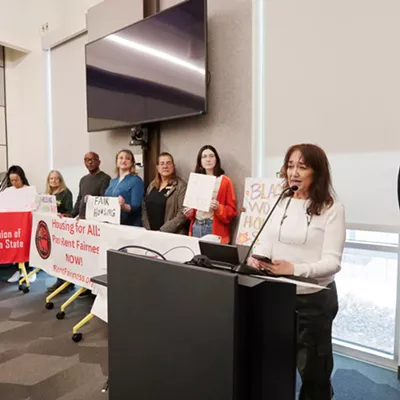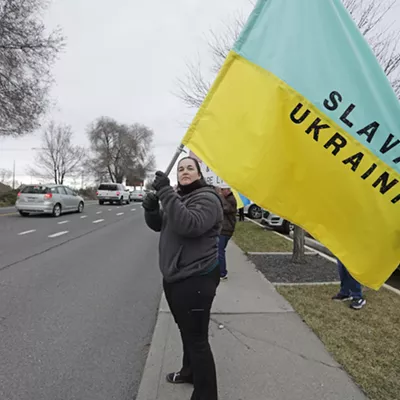It only took a few minutes into Finding Forrester for the joke to pop into my head: "Good Will Reading." Gus van Sant's marvelous entertainment, from a script by first-time screenwriter (and Pacific Northwest radio broadcaster) Mike Rich, treads perilously close to the contours of the award-winning Good Will Hunting, van Sant's last success, yet it has its own sweet verve.
The entire enterprise is capped by Sean Connery's lion-in-winter bluster as a reclusive novelist, William Forrester, known for having written a single novel after a few stories in The New Yorker and then essentially disappearing from the face of the earth. The book, somewhat like J.D. Salinger and The Catcher In The Rye, becomes much-beloved by youth and much-adopted in classes. Unlike the notoriously reclusive Salinger, however, Forrester does not have an uncommon penchant for seeking out talented underaged girls, but instead finds a prot & eacute;g & eacute; in his own neighborhood.
They still played baseball in the boroughs when Forrester moved into his cavernous, cluttered, pre-War, high-ceilinged apartment. The teams went west, but Forrester stayed. Then one day, 16-year-old Jamal (Rob Brown), a talented basketball player and aspiring writer, collides with the neighborhood recluse. Their interracial, "age-inappropriate" friendship is richly delineated, except for more than a couple of Hollywood touches as the story goes on.
While van Sant's earlier work, like Mala Noche, which tracks the fixation of a white man in his twenties for underage Latino boys, has much to say about meetings of the mind -- and other things -- between men, the homoerotic suggestion here is diminished to a point where such implications seldom come to mind. This also has to do with newcomer Brown's ability to match Connery in their scenes. Untrained, reportedly discovered when auditioning for extra work on the picture in order to pay down a nasty cell phone bill he'd just gotten, Brown has the kind of fortitude on-screen that allows you to believe the fantasy that this inner city polymath could actually have plowed through, and understood, a great big chunk of the major works of Western culture.
Van Sant's knack with actors far outstrips the shininess of his Good Will Hunting leads, and even in smaller roles, and in less convincing scenes, he never deserts them. Particularly good is the always-gleaming Anna Paquin, here the avid pursuer of Jamal when he is recruited by a Manhattan prep school. The film defeats the chances of a consummated interracial relationship, as most studio pictures do, after only hinting at such possibilities, yet Van Sant's depiction of their teasing dance, of gestures, of conversational thrust and parry, strikes genuine sparks.
But the story returns again and again to the lair of Forrester. The sense of space in his aging apartment suits the meeting of these two minds. Van Sant suggests it's a kind of cavern, Plato's Cave perhaps, where shadow and dust fall onto traditions that are no longer revered in our time. Basketball? Where is the dignity of basketball, a silly subplot asks? Where is that innocent time before our siblings die, before our parents disappoint, before the bottle in the bottom drawer eventually takes its place of honor beside the manual typewriter, displacing the pages, companionship and the likelihood, nay, possibility, of love.
Also worth mentioning is F. Murray Abraham, on hand as the nasty, racist teacher at the prep school, whose comeuppance must be desired and cheered in the end, but he's not much fun, he's only going through his oily paces. There is a terrific, eclectic score, assembled by veteran music anthologist Hal Wilner; Valdis Oskarsdottir's editing, as with The Celebration, is notably fleet; and Harris Savides' cinematography is warm and welcoming. His widescreen New York is as warm and forgiving as a hug.
















